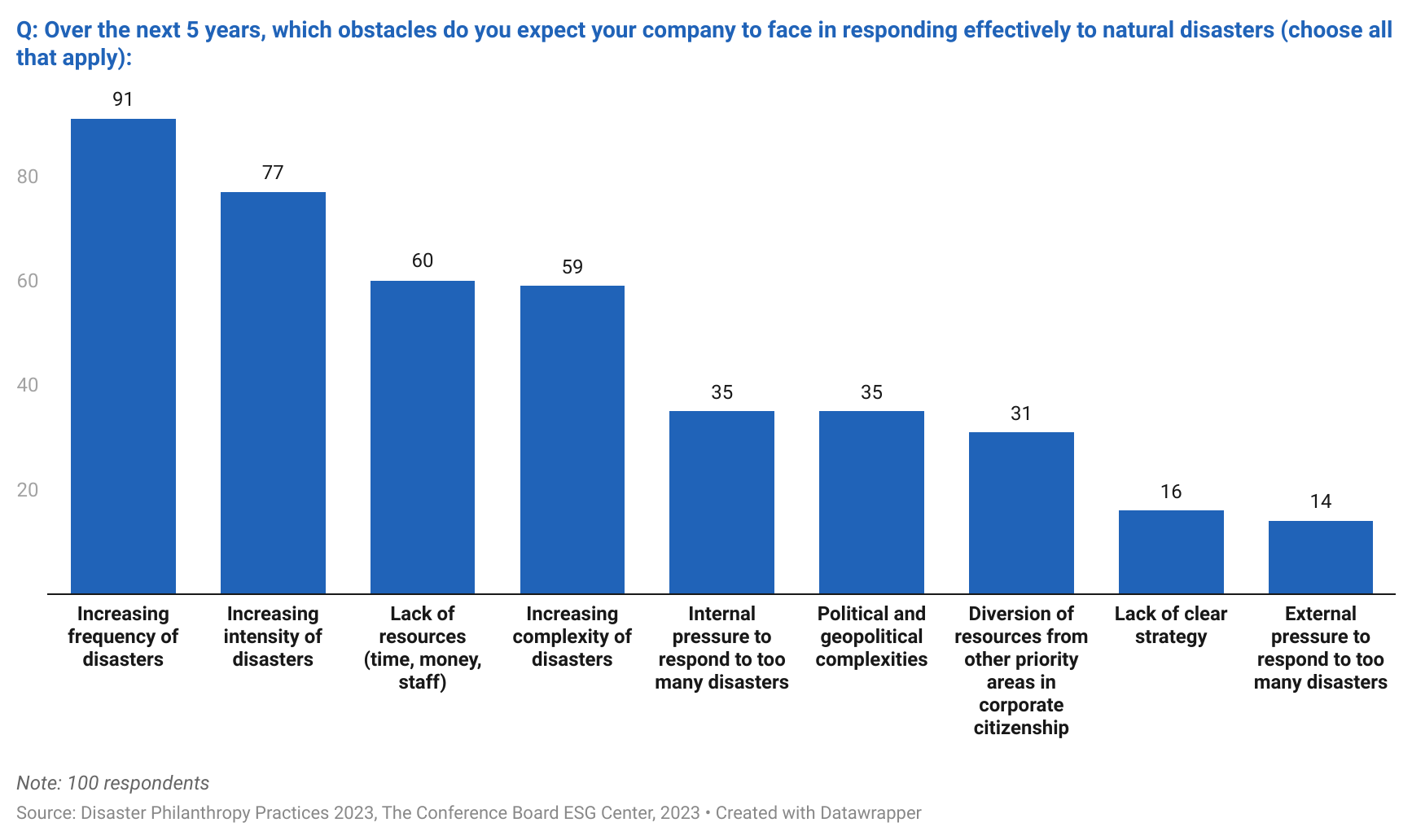Our survey of 100 leading companies reveals that virtually all corporations (91 percent) expect natural disasters to become more frequent over the next five years; 77 percent expect disasters to become more intense, and 59 percent think they will be more complex.
Insight for What’s Ahead: It is time for corporate citizenship leaders to move beyond responding compassionately to disasters to planning strategically for them. CEOs should consider directing their management teams, including corporate citizenship executives, to conduct a comprehensive assessment of the risks of natural disasters to the company, including its operations, employees, suppliers, customers, and communities.

With that assessment in hand, corporate citizenship leaders can collaborate within the company and with external partners such as nonprofits, governments, and peer companies to map out collective resources, identify gaps, and develop effective philanthropic disaster response plans.
Our latest report on disaster philanthropy practices provides further actionable insights for companies to make progress in these areas.
Our survey of 100 leading companies reveals that virtually all corporations (91 percent) expect natural disasters to become more frequent over the next five years; 77 percent expect disasters to become more intense, and 59 percent think they will be more complex.
Insight for What’s Ahead: It is time for corporate citizenship leaders to move beyond responding compassionately to disasters to planning strategically for them. CEOs should consider directing their management teams, including corporate citizenship executives, to conduct a comprehensive assessment of the risks of natural disasters to the company, including its operations, employees, suppliers, customers, and communities.

With that assessment in hand, corporate citizenship leaders can collaborate within the company and with external partners such as nonprofits, governments, and peer companies to map out collective resources, identify gaps, and develop effective philanthropic disaster response plans.
Our latest report on disaster philanthropy practices provides further actionable insights for companies to make progress in these areas.


